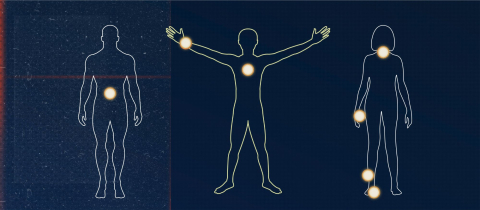Eating carrots really can make you see better. That is, if you’re deficient in vitamin A! Retinol, as the vitamin is also known, is absorbed from the digestive tract and is converted in the body to retinal which complexes with a molecule in the eye known as opsin. When light hits this complex, it unleashes a cascade of chemical events that lead to the transmission of an impulse up the optic nerve. Given that vitamin A is found in meat and fish, a deficiency in North America is rare. But you don’t have to have meat. Our bodies can also make vitamin A from beta carotene, the orange colored molecule found in carrots and numerous other vegetables. Rice, however, has virtually no beta carotene, and as a consequence, vitamin A deficiency in rice-based societies, such as India, China and Indonesia is common. As a result, an estimated half a million children in the world go blind every year. Various attempts have been made to supplement the diet with vitamin A, even adding it to packets of the flavor enhancer MSG, which is widely used in Indonesia, but there has been no significant success. That’s why so much excitement was generated when recombinant DNA technology made possible the insertion of a gene that codes for the production of beta carotene into rice. This gene, taken from daffodils, allowed the new- fangled rice to produce enough beta carotene to actually color it yellow, hence the term “golden rice.”
Proponents of genetically modified crops highlighted the development of golden rice as a breakthrough and suggested it would be a useful way to put a dent into the vitamin A deficiency problem. Opponents pointed out that the amount of beta carotene, roughly one and a half micrograms per gram of rice, was too little to have a practical impact. They claimed that the whole golden rice issue was a ploy by industry to push for wider acceptance of genetic modification. Researchers though pointed out that the technology was new, and improvements would surely be forthcoming. And they were right! A team at Syngenta Seeds in Britain has found that a gene taken from corn is far more adept at churning out beta carotene than the original one from daffodils. This second generation of golden rice contains almost twenty five times as much beta carotene as the original version. Studies still have to be carried out ensure that the nutrient is properly absorbed from the rice and the effect of cooking also has to be investigated. And of course any potential harmful effects, even though this is a truly remote possibility, have to be ruled out. The technology can have other spin offs as well. Vitamin A deficiency causes not only visual problems; it can lead to abnormal bone development and a greater susceptibility to infections. Low blood levels of vitamin A have even been linked with an increased risk of cancer. And should you think that Syngenta is just an evil multinational that is trying to capture the rice market in developing countries with overly optimistic promises, know this: Syngenta has donated the right for golden rice to the non-profit Humanitarian Rice Board. Remember something else. In just five years, researchers have found a way to increase the beta carotene content of rice twenty five fold. Imagine the breakthroughs that the next few years may bring.







